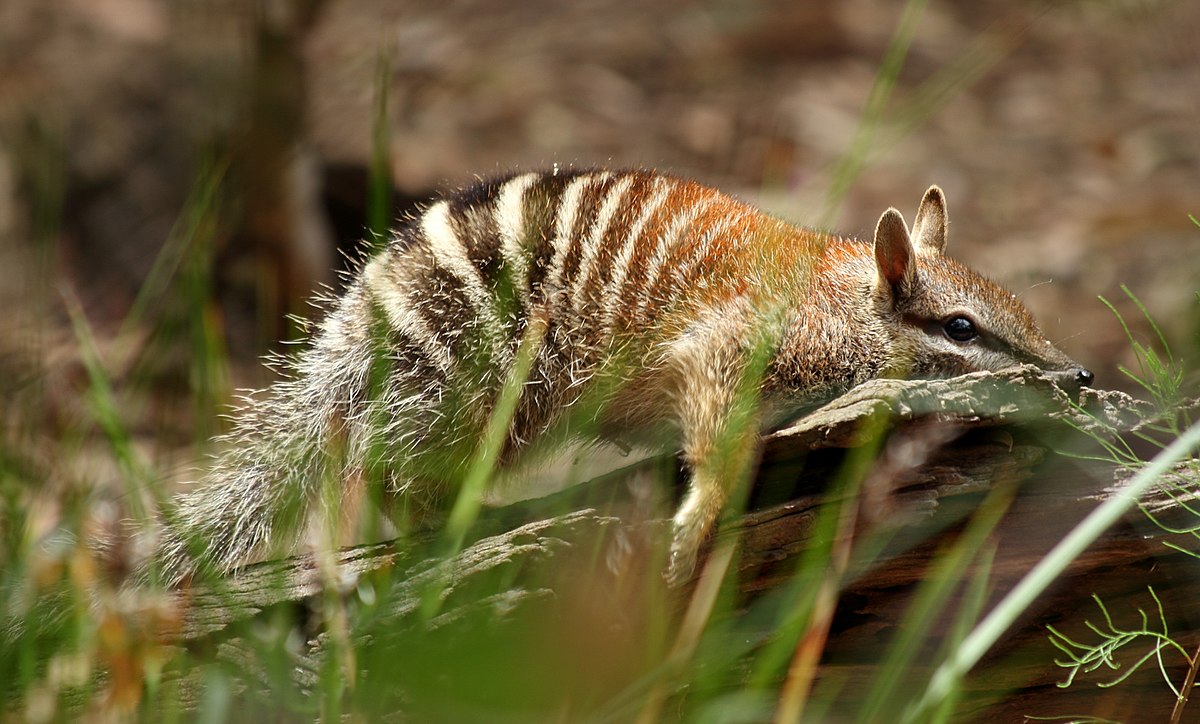The numbats were spotted earlier in the month, a year after a group of ecologists began reintroducing the animals to the area.
“We reintroduced some numbats last November-December, and this is the first time they’ve bred since then,” Ecological Horizons ecologist Katherine Moseby said.
“We’ve got four juveniles we’ve spotted on camera outside one of our female’s burrows so it’s really exciting.”
Dr Moseby and their partner John Read introduced 16 numbats to the area in an enclosure at Secret Rocks at the end of last year.
Since the numbats were fenced off from predators, they have been able to breed and make a comeback.
Dr Moseby said that there may be more young numbats that haven’t been caught on camera yet.
“There should be quite a few females out there with pouch young,” Dr Moseby said.
“This is just one female we managed to catch. They can be really sort of cryptic when they have pouch young, they deposit them in the nest and then they kind of hide the entrance of the nest so they’re quite hard to find.”
Numbats are a threatened species and are one of just two Australian marsupials that are diurnal, rather than nocturnal, which means they come out during the day.
“Numbats are particularly switched on … and they’re very susceptible to birds of prey,” Dr Moseby said.
“If they see you coming, they retreat straight away to a hollow or burrow.”
Dr Moseby said the next step for the animals is to get them outside the fenced off, protected enclosures.
“The hard part is then trying to get them outside those fences and into the broad landscape which at some point we will try and do,” Dr Moseby said.
“But we want the populations to breed up inside the fences and then … we’ll try and get them outside the fences and into the much larger landscapes.”






